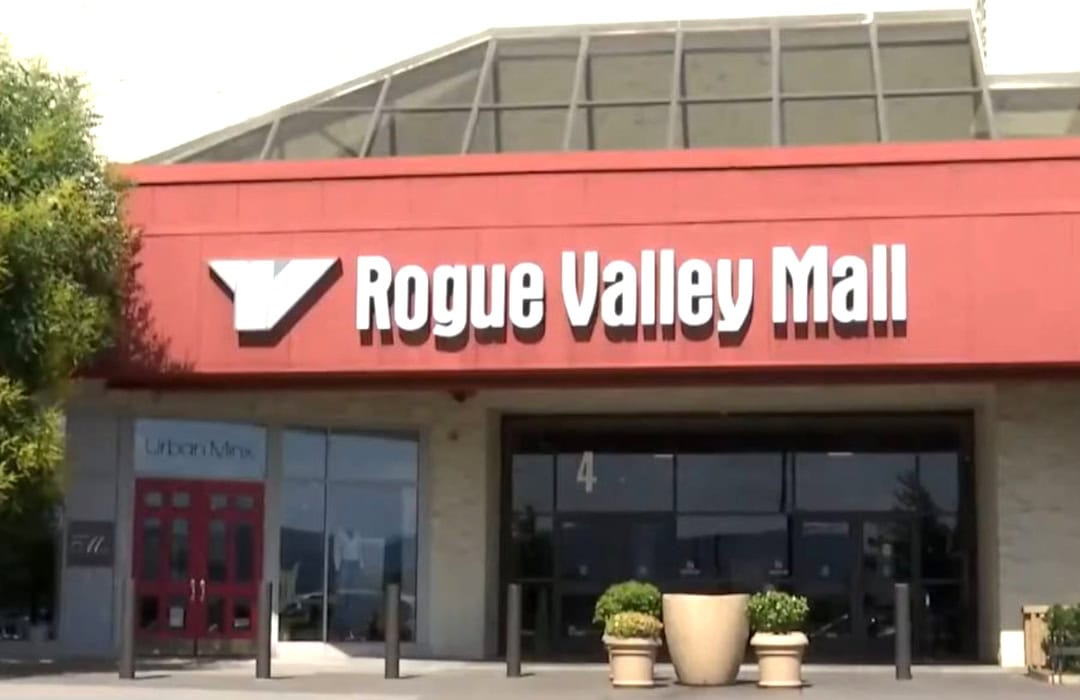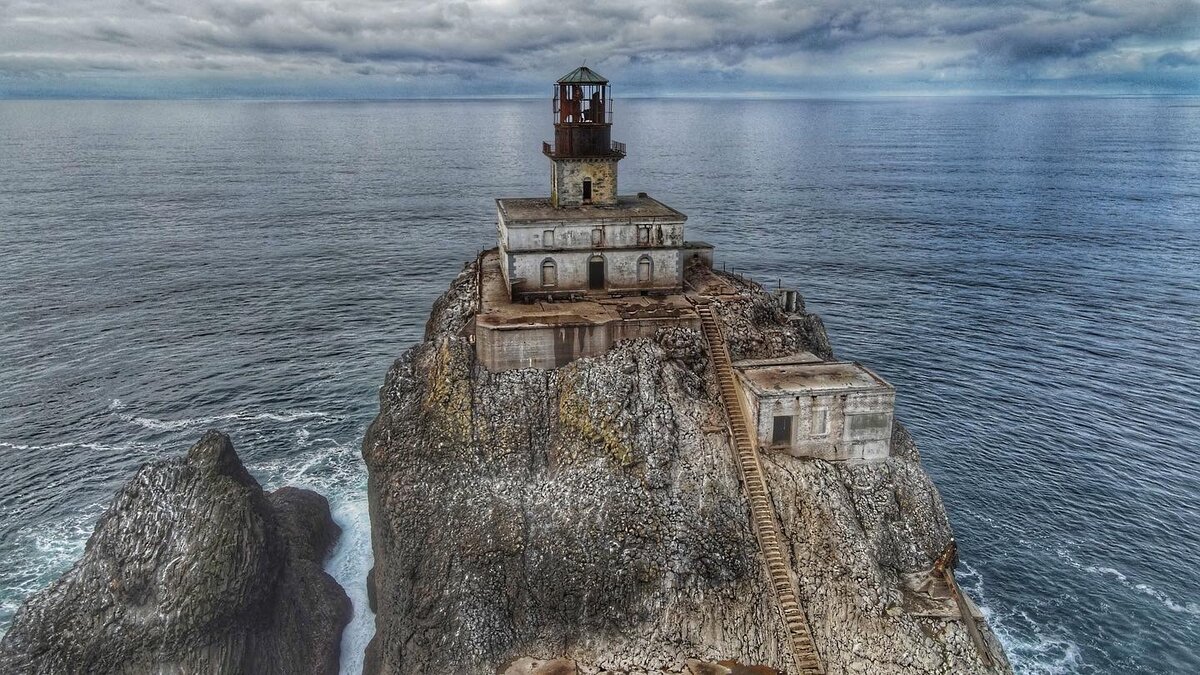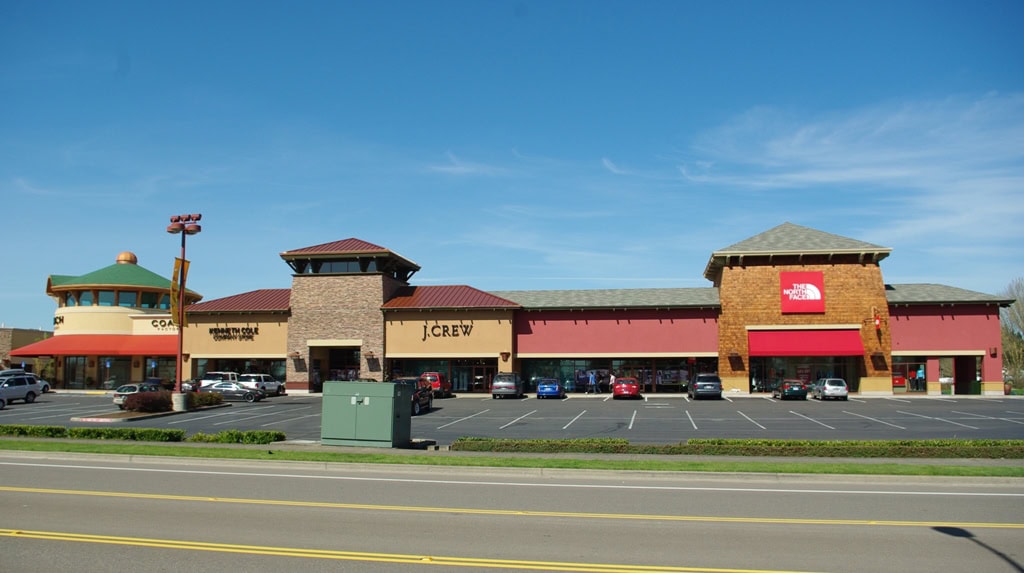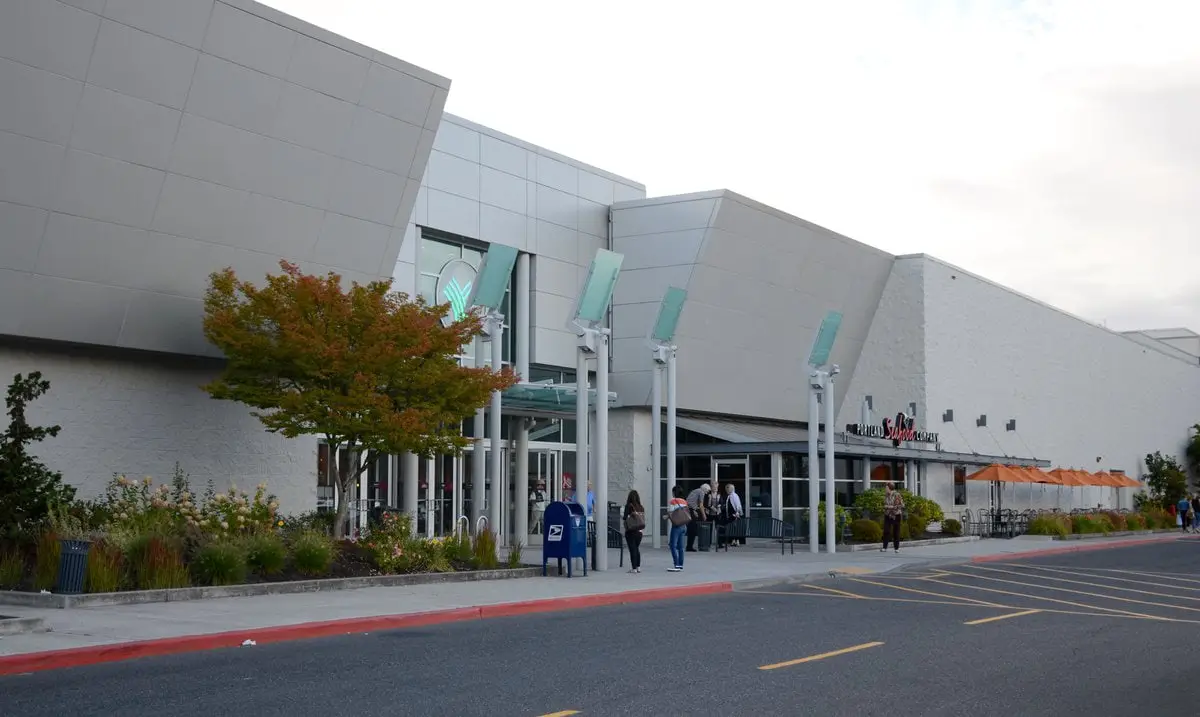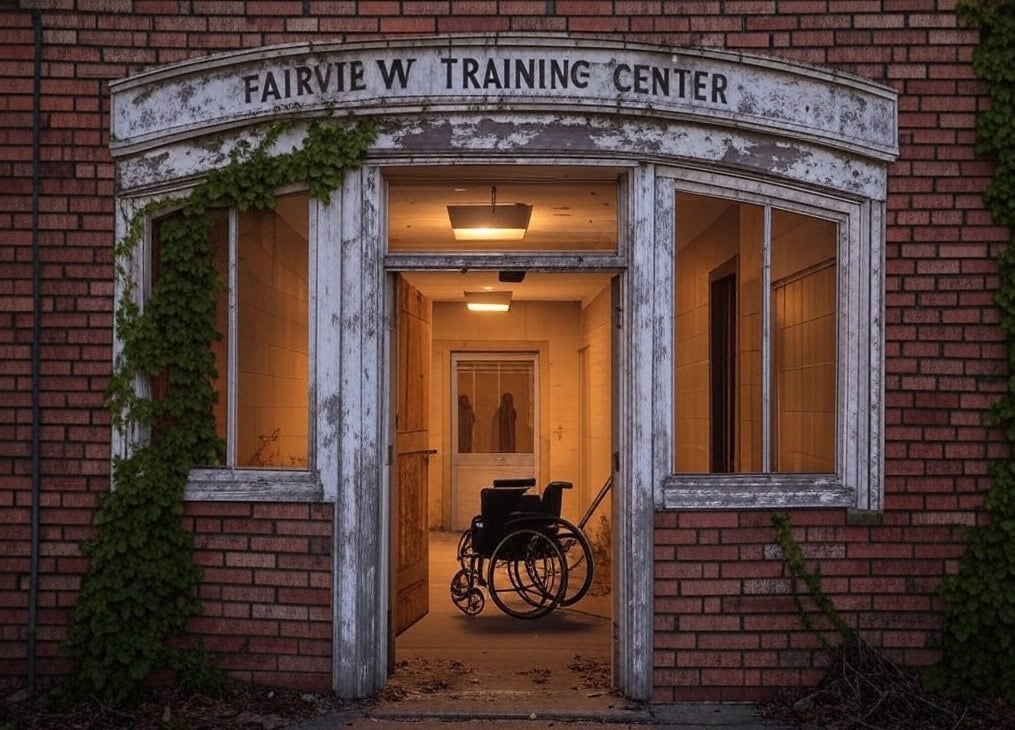Rogue Valley Mall: The Birth of a Valley Landmark
Rogue Valley Mall opened in 1986 after years of arguments, plans, and hope that Medford could grow a little.
Opening day traffic packed North Riverside Avenue, as crowds filled the new two-level complex and local news crews filmed.
The mall instantly became southern Oregon's indoor hub, drawing shoppers from miles away and anchoring regional pride.
The project had been debated for more than fifteen years before Price Development Company of Utah made it real.
At last, the Rogue Valley had its enclosed mall: two levels, 847,000 square feet of total area, about 633,000 square feet of leasable space, built across roughly fifty acres beside Interstate 5.
On opening day, October 15, 1986, local newspapers recorded the ribbon-cutting, the flood of shoppers, and the brand-new glow of Meier & Frank, JCPenney, Montgomery Ward, and Mervyn's.
For Medford, the mall wasn't just about shopping.
It was proof that the city had finally made it past its mill-town years.
When Meier & Frank opened its doors here, it felt like a signal from the rest of Oregon that Medford had arrived.
You could sense it in the way people talked about it, like the city had been let into something bigger.
The small Movies 5 inside the mall made that feeling real.
On Friday nights, it was packed with families, teenagers, and couples who didn't have anywhere else to go.
For more than a decade, it gave the valley a gathering place that felt bright and modern.
The Rogue Valley Mall stood for progress, plain and simple, a sign that southern Oregon had joined the world it used to drive hours to reach.
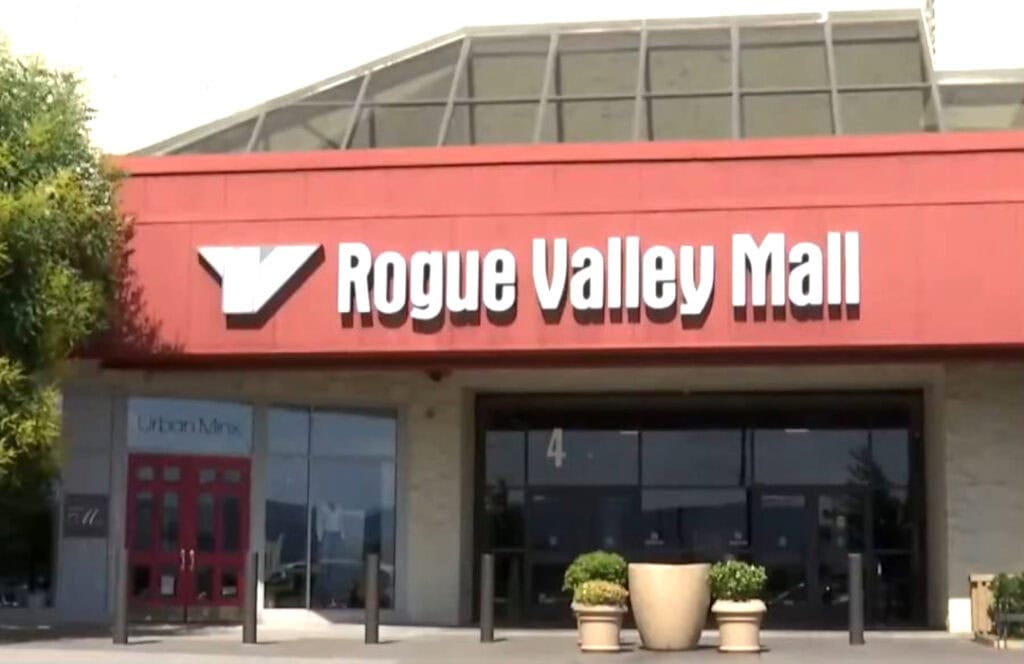
Ownership Shifts and Market Realities
Price Development didn't hold the property for long.
In 1992, it was owned by Fund A Rogue Valley Inc., tied to a New York pension fund.
Then, in December 2000, Gregory Greenfield & Associates of Atlanta bought the mall for $33.4 million.
Greenfield's company focused on mid-market regional malls with unrealized potential, particularly in secondary markets.
By December 2003, General Growth Properties stepped in.
The Chicago-based retail giant, already operating malls in Portland, Eugene, and Salem, purchased Rogue Valley Mall for $57.5 million.
At the time, it was producing about $291 per square foot in annual sales from its leasable space.
The transaction marked the beginning of a more corporate era, as General Growth folded the mall into its Oregon portfolio.
But it also came during an inflection point in retail history.
Department stores were merging, catalog retailers were disappearing, and shopping habits were beginning to fragment under the first waves of online commerce.
The Anchor Revolutions
The mall's anchor roster soon became a time capsule of the national retail story.
In 2001, Montgomery Ward filed for bankruptcy, closing all stores nationwide.
The Medford location's upper level was taken over by Copeland Sports, while the lower level became a Meier & Frank Home Store.
When Federated Department Stores acquired the May Company in 2005, Meier & Frank was absorbed into Macy's, bringing the national brand to Medford in 2006.
That same year, Copeland Sports declared bankruptcy and was acquired by Sports Authority, which kept the upstairs location running under its new name.
The next major change came in December 2006, when Mervyn's closed its Medford store as part of the chain's full exit from Oregon.
Kohl's soon purchased the space, opening in 2007 and rebalancing the mall's mix toward general apparel and home goods.
Meanwhile, Linens-N-Things filed for bankruptcy in 2008, and its Medford store was replaced by Bed Bath & Beyond.
For a time, the mall remained fully anchored, with JCPenney as the only original tenant still in operation.
The pattern became predictable: national chain fails, new banner rises in the same footprint.
Sports Authority's 2016 bankruptcy closed its Medford store, which Macy's replaced in 2019 with a Backstage discount concept.
Bed Bath & Beyond lasted until 2023 before its national liquidation forced another closure.
American Freight, one of the mall's larger tenants, began closing sales in November 2024 as part of a nationwide shutdown of all 328 stores.
Its Medford location was included in that sweep, leaving another big space soon to go dark.
Each anchor shift was less about local weakness than about seismic national changes in retail.

Brixton's Bet and the Pre-Pandemic Years
In August 2016, Brixton Capital of San Diego bought the mall for $61.5 million.
Brixton's pitch was straightforward: Rogue Valley Mall was the largest indoor shopping complex between Eugene and Sacramento, located along Interstate 5 with strong demographics and Oregon's no-sales-tax appeal.
But the challenges that hit regional malls nationwide were accelerating.
E-commerce growth, declining department store relevance, and consumer fatigue began to erode traffic.
Still, occupancy remained strong, helped by stable anchors and the mall's geographic isolation.
Then came COVID-19. In March 2020, the mall went dark for the first time in its history.
It reopened on May 15, 2020, when Governor Kate Brown approved Jackson County's phase-one reopening.
General Manager told local media that while not every store could open immediately, "the vast majority will reopen this week." Within days, Medford's indoor hub was breathing again: masked, distanced, but alive.
Receivership and Reset
The pandemic recovery proved uneven. By late 2021, Brixton's loan had matured and gone into default.
The property entered special servicing, and in December 2021, Spinoso Real Estate Group of Syracuse, New York, was appointed receiver.
On February 5, 2024, Spinoso formally took over full management.
Founded in 2009, Spinoso specializes in reviving large-scale enclosed malls.
Its team began stabilizing the tenant mix, renewing leases, and repositioning the property.
As of late 2024, occupancy reached 91 percent, respectable in a post-pandemic retail market.
The mall's four major anchors: Macy's, Macy's Backstage, Kohl's, and JCPenney, accounted for more than 350,000 square feet combined.
Other key tenants included Trader Joe's, HomeGoods, Chico's, American Eagle, and Bath & Body Works.
Its ten-unit food court hosted staples like Chipotle, Subway, Mod Pizza, McGrath's Seafood, and Claim Jumper.
Rogue Valley Mall had found equilibrium again, at least temporarily.
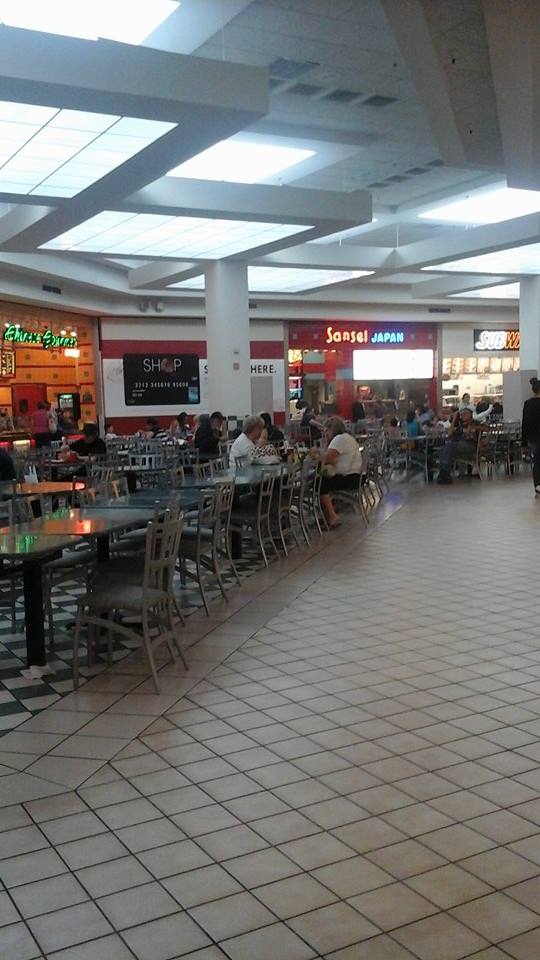
A Mall with a Pulse
Rogue Valley Mall is still the only enclosed shopping center of its kind in southern Oregon.
It pulls customers from as far as Northern California, an 80-mile reach that keeps the parking lots busy even when the economy softens.
The location helps: three miles from downtown Medford, two from the airport, and surrounded by the city's largest employers: Lithia Motors, Asante Health, and Harry & David, among them.
The mall sits in the middle of everything.
On weekends, it still feels alive. Downtown may have lost that everyday energy decades ago, but the mall still has it.
Its endurance has practical roots.
Oregon's lack of a sales tax pulls shoppers across the border from California, and distance does the rest.
The nearest enclosed malls are Eugene's Valley River Center and Gateway, Mt. Shasta Mall in Redding, and Bayshore in Eureka. They are each more than a hundred miles away.
For Rogue Valley Mall, that isolation has turned into protection.
The Last Sam Goody
One tenant has turned the Rogue Valley Mall into a retail relic: Sam Goody.
Once a national music chain with hundreds of stores, by late 2024, only two remained: one in Ohio, one in Medford.
When national news outlets reported both would close in early 2025, the Medford manager disagreed.
"It's not true," he told reporters.
So, Rogue Valley Mall is home to the last Sam Goody in the United States, a cultural artifact still selling physical CDs and vinyl under fluorescent light.
The irony isn't lost on locals: in an age of streaming, the last Sam Goody lives inside one of the last thriving regional malls.

The Road Ahead
Rogue Valley Mall has been through more than most buildings of its age.
Since 1986, it has watched big names come and go: Montgomery Ward, Mervyn's, Linens-N-Things, Copeland Sports, and Sports Authority.
Every time one of them fell, people said it might be the beginning of the end.
It never was. The mall kept finding new tenants and new reasons to exist.
It has survived recessions, ownership changes, and even a pandemic that closed almost everything else.
For now, the mix tells the story. A new gym is on the way, Macy's is still standing, and Sam Goody refuses to die.
Together, they show what the mall has always been: part nostalgia, part survival.
It isn't a relic. It's a place that changes just enough to keep breathing.

